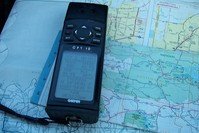 In Commonwealth v. Mauricio, the SJC reversed the denial of a motion to suppress images retrieved by the police during a warrantless search of a digital camera that was seized from the defendant’s person.
In Commonwealth v. Mauricio, the SJC reversed the denial of a motion to suppress images retrieved by the police during a warrantless search of a digital camera that was seized from the defendant’s person.
The background was as follows. A police officer (Collins) “received a report that two ‘suspicious parties’ were seen running out of the side door of a residence on Downing Drive in Taunton…. Shortly thereafter, Collins located two individuals nearby largely matching the … descriptions” given in the report. One of the individuals “was identified as the defendant…. Collins pat frisked the defendant and searched his backpack. Inside the backpack, Collins found … [a] digital camera,” a ring, and other items. The defendant was arrested. The evidence officer for the police department (Detective Treacy) “conducted an inventory search of the defendant’s backpack. Believing the camera to have been stolen, Treacy … turned the camera on and viewed the digital images it contained in the hope of identifying its ‘true’ owner. In doing so, Treacy came across an image of [the defendant] with firearms.” Treacy showed the image to a fellow detective who “had been investigating a housebreak on Plain Street in Taunton where two firearms and jewelry had been reported stolen. [The other detective,] suspecting that the firearms in the digital image[] matched the firearms stolen from the Plain Street residence, contacted the homeowner and showed him a printed photograph of … the digital image[]…. [T]he homeowner confirmed that the firearms and the other items in the photograph were taken from his home during the break-in.” After the issuance of indictments against the defendant for carrying a firearm without a license and receiving stolen property with a value in excess of $250, the defendant filed two motions to suppress, which were denied. In his first motion, the defendant sought to suppress the physical evidence that was seized from his backpack by the police without a warrant. The judge denied the motion on the ground that “the contents of the backpack would [inevitably] have been discovered during a later search incident to arrest.” In his second motion, the defendant sought “to suppress the images discovered as the result of the warrantless search of the digital camera.” “The judge denied [that] motion on the ground that the viewing of the digital images was part of a valid inventory search.” At trial, the defendant was convicted of both of the charged offenses. “On appeal, [he] argue[d] that the judge wrongly denied the motion to suppress the images recovered from the warrantless search of the digital camera because,” in the defendant’s view, “the search did not fall within the purview of the search incident to arrest exception to the warrant requirement and exceeded the scope of a valid inventory search.” Continue reading →
 Massachusetts Criminal Lawyer Blog
Massachusetts Criminal Lawyer Blog









